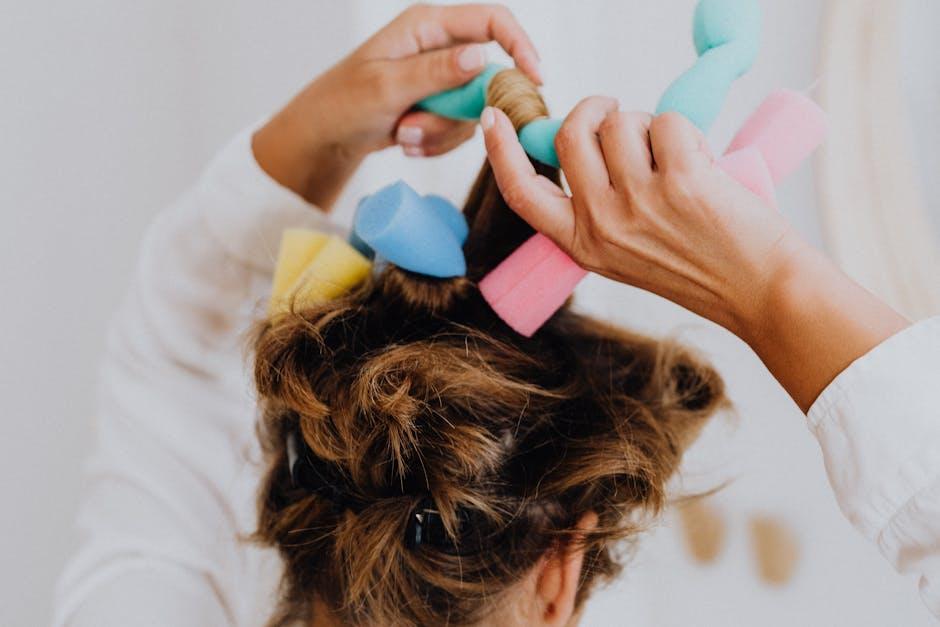In the bustling world we navigate daily, our bodies often bear the brunt of our hectic schedules, leaving us with tense muscles and aching joints. Enter the foam roller, a humble yet transformative tool that has quietly revolutionized the way we approach self-care and recovery. Imagine a world where you can melt away the stiffness of a long day or the soreness of an intense workout with just a few simple movements. Foam rollers offer exactly this possibility, serving as the perfect companion to your stretching routine. In this article, we delve into the art and science of foam rolling, exploring how this cylindrical wonder can enhance your flexibility, alleviate tension, and elevate your overall well-being. Whether you’re a seasoned athlete or someone simply seeking solace from daily stresses, discover how integrating foam rollers into your stretching regimen can unlock a new dimension of physical harmony.
Unlocking the Benefits of Foam Rolling for Enhanced Flexibility
Foam rolling is a powerful technique that can significantly enhance your flexibility when integrated into your stretching routine. This self-myofascial release method targets muscle knots and tightness, helping to release tension and improve blood flow to the muscles. By incorporating foam rolling into your daily regimen, you can increase your range of motion and reduce muscle soreness after workouts. This approach not only complements traditional stretching but also optimizes it by preparing the muscles to stretch more effectively.
- Target Specific Areas: Focus on areas that are often tight, such as the calves, quads, and back.
- Roll Slowly: Move slowly over the foam roller to identify sensitive spots, pausing to apply gentle pressure where needed.
- Consistency is Key: Integrate foam rolling into your routine several times a week for the best results.
- Breathe Deeply: Maintain steady breathing to help relax your muscles during the process.
By prioritizing these practices, you can harness the full potential of foam rolling, making it a valuable ally in your journey towards greater flexibility and overall muscle health.

Targeting Key Muscle Groups with Precision and Care
To truly enhance your stretching routine, it’s essential to understand the specific muscle groups that can benefit from foam rolling. This practice not only aids in reducing muscle tension but also helps in improving flexibility and circulation. Begin by focusing on the quadriceps, hamstrings, and calves. These larger muscle groups often carry a lot of tension, especially after intense workouts.
For a more tailored approach, consider the following key areas:
- Upper Back: Relieve tension and improve posture by rolling along the upper spine.
- IT Band: This often-overlooked area can benefit greatly from gentle rolling to alleviate tightness.
- Glutes: Target these muscles to enhance hip flexibility and reduce lower back strain.
Approach each session with care, listening to your body’s signals, and adjusting pressure as needed to avoid discomfort. By focusing on these areas with precision, you can significantly amplify the benefits of your stretching routine.

Incorporating Foam Rolling into Your Daily Stretching Routine
Integrating foam rolling into your daily routine can elevate your stretching practice to a whole new level. This simple yet effective tool helps release muscle tightness and improve flexibility, making it an ideal complement to traditional stretches. Foam rolling can be seamlessly incorporated into your regimen by targeting specific muscle groups, such as the calves, hamstrings, quadriceps, and back, to address tension and improve mobility. Begin by identifying areas of tightness or discomfort, and focus on these regions with the roller, using your body weight to apply pressure.
- Calves: Place the roller under your calves and roll from your ankles to just below your knees.
- Hamstrings: Sit on the floor, placing the roller under your thighs, and roll from your knees to your hips.
- Quadriceps: Lie face down with the roller under your thighs, rolling from your hips to your knees.
- Back: Position the roller under your upper back and gently roll from your shoulders to your mid-back.
Foam rolling before stretching can help warm up the muscles, while rolling after can aid in recovery and reduce soreness. Remember to breathe deeply and roll slowly to maximize the benefits, and soon you’ll notice a significant enhancement in your flexibility and overall muscle health.

Expert Tips for Maximizing Results and Preventing Injury
To enhance your foam rolling experience and safeguard against injuries, consider these expert tips. Begin with a dynamic warm-up before reaching for your foam roller. This primes your muscles, increasing their elasticity and readiness for deeper work. Always roll slowly and deliberately, spending about 1-2 minutes on each muscle group. This mindful approach not only improves your technique but also helps you identify areas of tension that may need extra attention.
- Focus on Breathing: Inhale deeply and exhale as you roll over tight spots to help release tension.
- Stay Hydrated: Drinking water before and after foam rolling aids in flushing out toxins and promotes muscle recovery.
- Listen to Your Body: Avoid rolling directly over joints or bones, and if you feel sharp pain, stop immediately to prevent injury.
- Incorporate Variety: Use different types of foam rollers, such as textured or vibrating ones, to target various muscle groups more effectively.
Closing Remarks
As you roll away from the final paragraphs of this guide, envision the journey of rejuvenation that lies ahead. Foam rollers, with their simple yet transformative touch, can become a pivotal ally in your stretching routine. They whisper to the muscles, coaxing them to relax, to release, and to renew. Whether you’re a seasoned athlete or a casual exerciser, the art of foam rolling holds the promise of enhanced flexibility and deeper recovery. So, next time you unroll your mat, let the foam roller be your guide, inviting your body into a harmonious dance of tension and relief. Embrace this newfound companion, and watch as it transforms your routine into a ritual of revitalization. Happy rolling!
